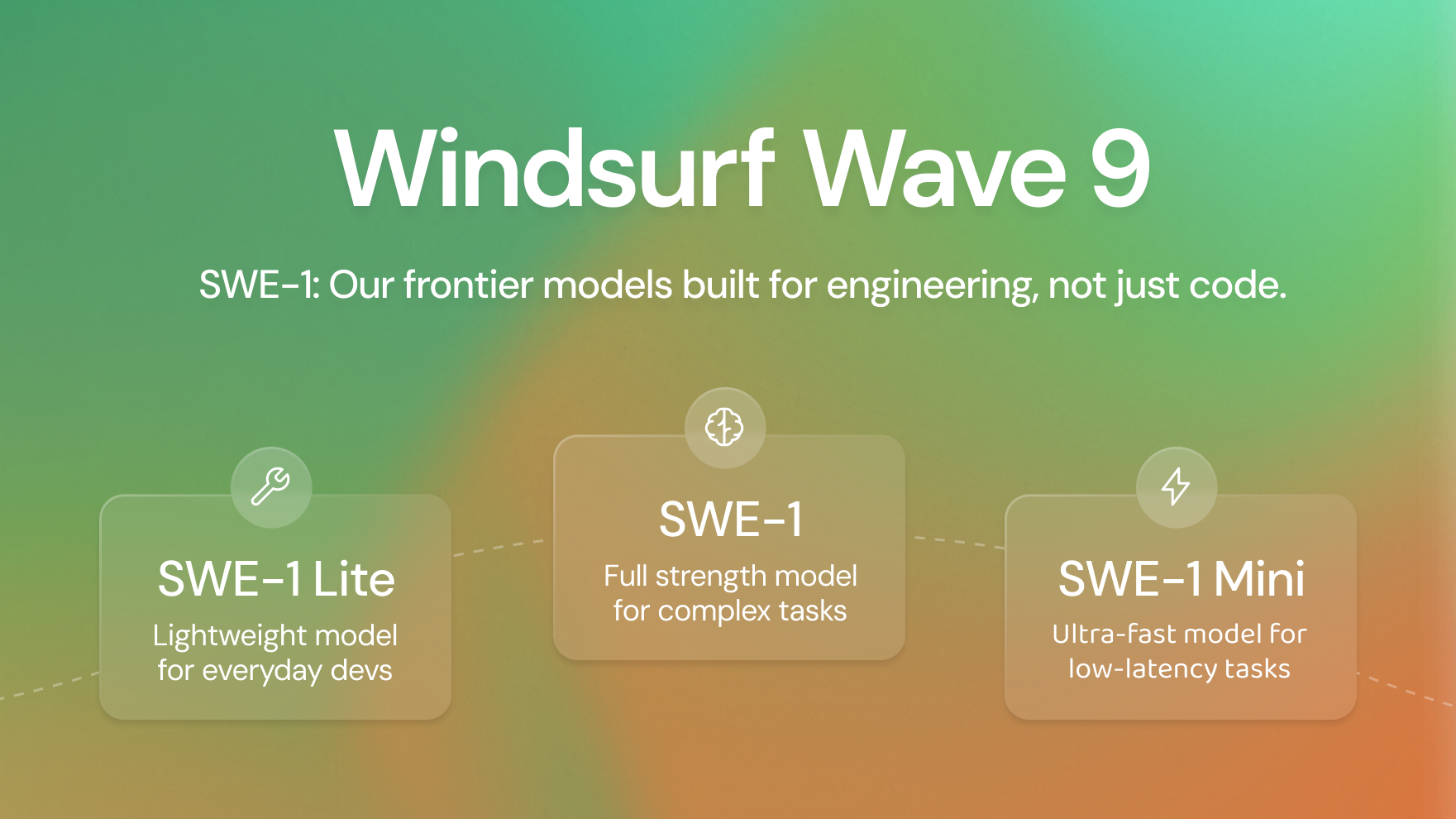Windsurf has launched homegrown AI models despite OpenAI deal

Windsurf, the startup best known for its AI coding assistant tools, has launched a new set of proprietary models aimed at redefining how AI supports software engineering. The newly introduced family includes three models: SWE-1, SWE-1-lite, and SWE-1-mini. Unlike traditional code-generation tools, these models are designed to support the entire software engineering process from end to end.
The announcement signals a notable shift for Windsurf. Until now, the company had built its reputation on user-facing tools powered by models from OpenAI, Anthropic, and Google. By training its own foundation models, Windsurf is now positioning itself as a platform that controls both the interface and the intelligence behind it. This move comes amid reports that OpenAI has agreed to acquire Windsurf in a deal valued at 3 billion dollars, suggesting that Windsurf is asserting its roadmap independently regardless of the acquisition.
At the center of the launch is SWE-1, the most powerful model in the lineup. According to internal benchmarks shared by Windsurf, SWE-1 delivers performance comparable to Claude 3.5 Sonnet, GPT-4.1, and Gemini 2.5 Pro. It still trails frontier models like Claude 3.7 Sonnet in certain tasks, but the company emphasizes that SWE-1 was trained with a different goal: to support long-term engineering workflows rather than just produce high-accuracy code completions.
The lighter models, SWE-1-lite and SWE-1-mini, are designed for broader accessibility. Both versions will be available to all users on the platform, regardless of subscription status. SWE-1, on the other hand, will be exclusive to paid users. While pricing has not been disclosed, Windsurf claims SWE-1 is more cost-efficient to run than Claude 3.5 Sonnet, which could appeal to teams looking to scale AI-assisted development without inflating infrastructure costs.
Windsurf’s tools are part of the fast-growing “vibe coding” segment, where developers interact with AI chat interfaces to write, debug, and refactor code. Cursor and Lovable are among the other startups in this space. These platforms have historically depended on third-party models, but Windsurf’s latest move suggests a new phase where control over the underlying model architecture becomes a strategic advantage.
The company’s Head of Research, Nicholas Moy, underscored this vision in a video introducing the SWE series. “Today’s frontier models are optimized for coding, and they’ve made massive strides,” he said. “But they’re not enough for us. Coding is not software engineering.” That distinction forms the core of Windsurf’s thesis: software development is a layered, contextual task that requires models to operate across tools, environments, and long-term objectives.
Windsurf says it built its models using a novel training approach that incorporates multi-surface workflows and incomplete development states. Rather than only training on final versions of code, SWE-1 has been exposed to real-world scenarios where developers switch between terminals, IDEs, and browsers, often mid-task. This gives the model a more grounded understanding of how software gets built in practice.
The company describes this release as a first step. In a blog post, Windsurf calls SWE-1 a “proof of concept” and hints at future iterations. The launch represents a strategic foundation for what could become a broader platform play, potentially involving deeper integrations, custom tooling, and further model releases.
